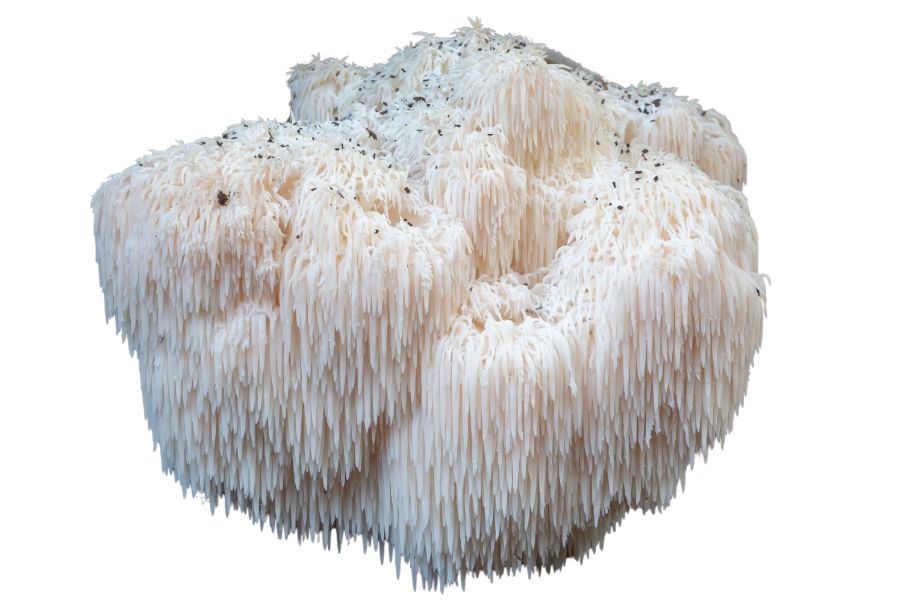Louisiana offers a world of natural treasures for those who know where to look. The state boasts a variety of wild plants and fungi that can be both delicious and profitable. Many locals have turned foraging into a fun hobby or even a source of income.
Wild mushrooms grow abundantly throughout Louisiana’s diverse landscapes. Chanterelles with their golden color and fruity aroma can sell for good money at farmers markets. Morels also appear briefly each spring, fetching high prices from restaurants and food enthusiasts.
Medicinal plants thrive in Louisiana’s rich soil and humid climate. Elderberry and sassafras have traditional uses that make them sought after by herbalists and health-focused shoppers. These plants grow freely in many wooded areas across the state.
Understanding seasons and locations will improve your foraging success in Louisiana. Some valuable finds only appear for a few weeks each year. Learning to recognize prime spots and what to gather takes practice but pays off with bountiful harvests.
What We Cover In This Article:
- What Makes Foreageables Valuable
- Foraging Mistakes That Cost You Big Bucks
- The Most Valuable Forageables in the State
- Where to Find Valuable Forageables in the State
- When to Forage for Maximum Value
- The extensive local experience and understanding of our team
- Input from multiple local foragers and foraging groups
- The accessibility of the various locations
- Safety and potential hazards when collecting
- Private and public locations
- A desire to include locations for both experienced foragers and those who are just starting out
Using these weights we think we’ve put together the best list out there for just about any forager to be successful!
A Quick Reminder
Before we get into the specifics about where and how to find these plants and mushrooms, we want to be clear that before ingesting any wild plant or mushroom, it should be identified with 100% certainty as edible by someone qualified and experienced in mushroom and plant identification, such as a professional mycologist or an expert forager. Misidentification can lead to serious illness or death.
All plants and mushrooms have the potential to cause severe adverse reactions in certain individuals, even death. If you are consuming wild foragables, it is crucial to cook them thoroughly and properly and only eat a small portion to test for personal tolerance. Some people may have allergies or sensitivities to specific mushrooms and plants, even if they are considered safe for others.
The information provided in this article is for general informational and educational purposes only. Foraging involves inherent risks.
What Makes Foreageables Valuable
Some wild plants, mushrooms, and natural ingredients can be surprisingly valuable. Whether you’re selling them or using them at home, their worth often comes down to a few key things:
The Scarcer the Plant, the Higher the Demand
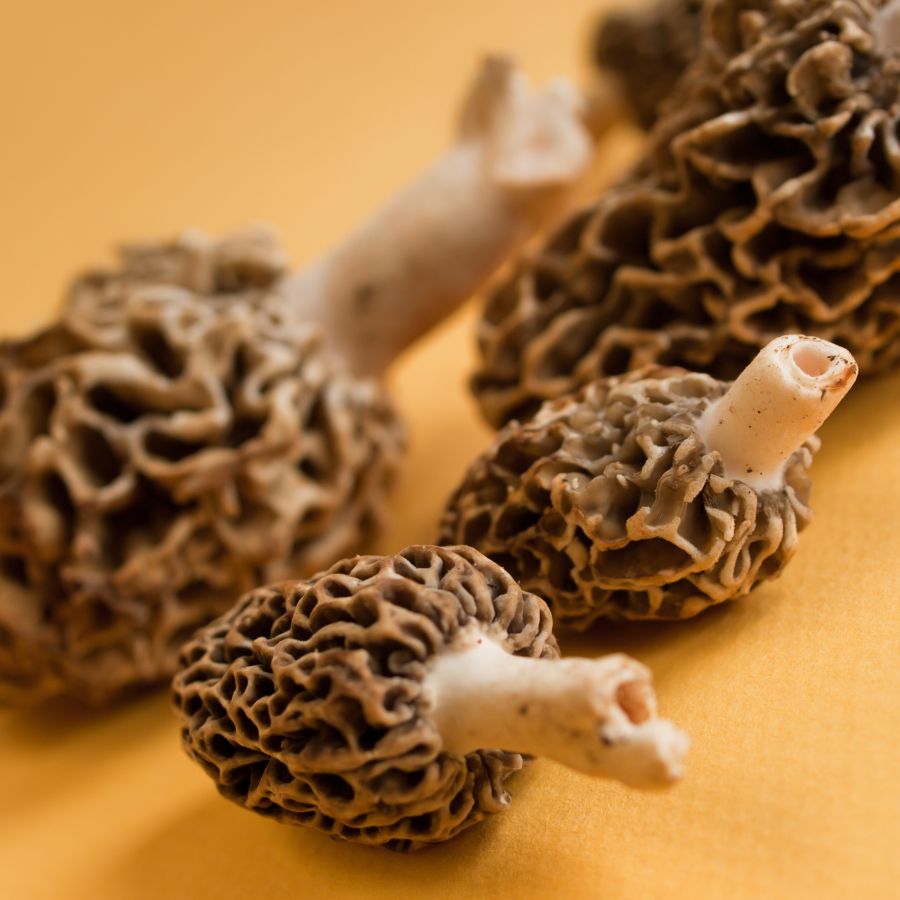
Some valuable forageables only show up for a short time each year, grow in hard-to-reach areas, or are very difficult to cultivate. That kind of rarity makes them harder to find and more expensive to buy.
Morels, truffles, and ramps are all good examples of this. They’re popular, but limited access and short growing seasons mean people are often willing to pay more.
A good seasonal foods guide can help you keep track of when high-value items appear.
High-End Dishes Boost the Value of Ingredients
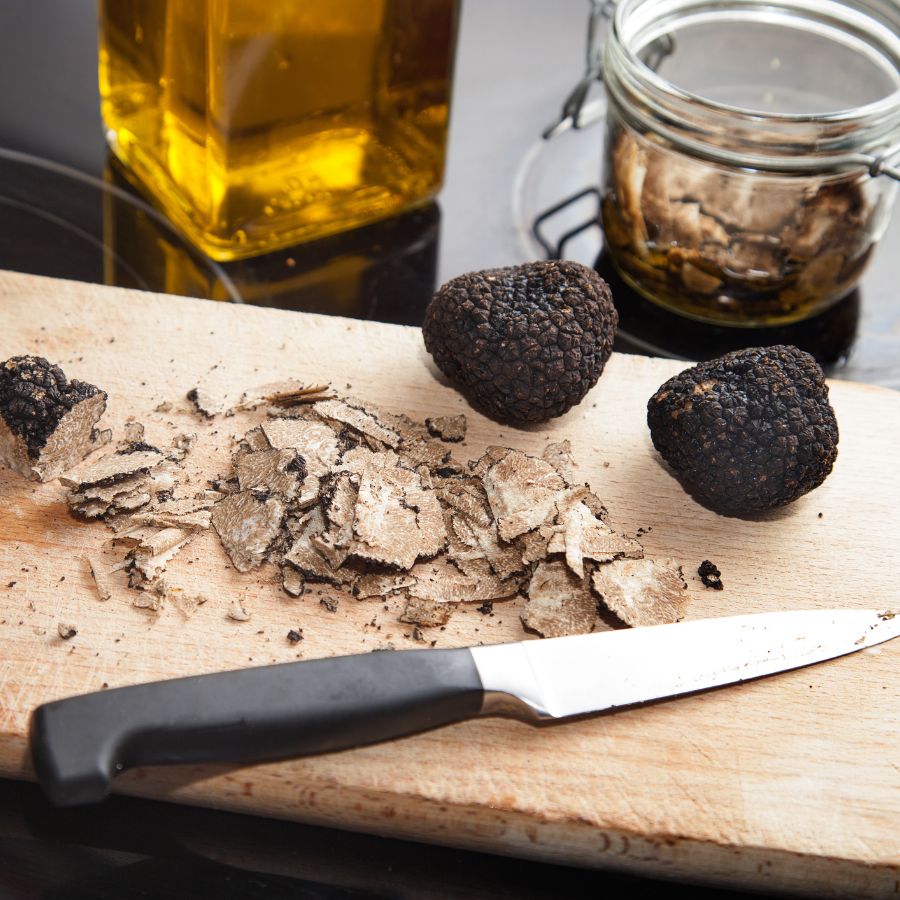
Wild ingredients that are hard to find in stores often catch the attention of chefs and home cooks. When something unique adds flavor or flair to a dish, it quickly becomes more valuable.
Truffles, wild leeks, and edible flowers are prized for how they taste and look on a plate. As more people try to include them in special meals, the demand—and the price—tends to rise.
You’ll find many of these among easy-to-identify wild mushrooms or herbs featured in fine dining.
Medicinal and Practical Uses Drive Forageable Prices Up
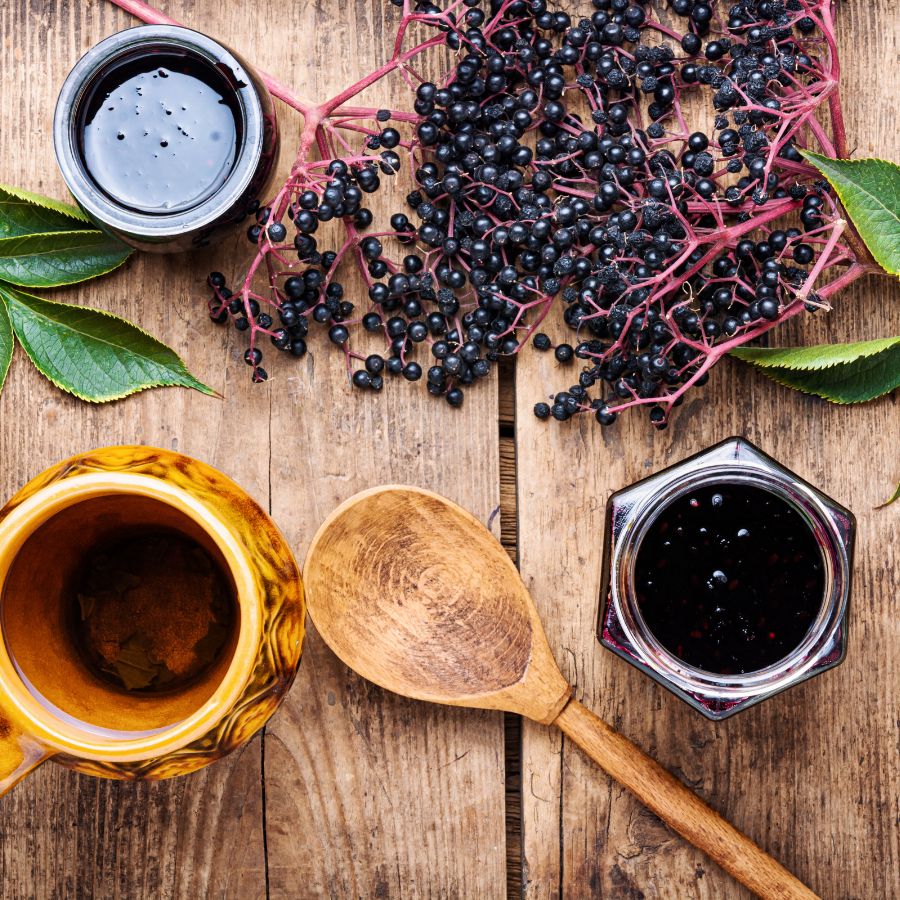
Plants like ginseng, goldenseal, and elderberries are often used in teas, tinctures, and home remedies. Their value comes from how they support wellness and are used repeatedly over time.
These plants are not just ingredients for cooking. Because people turn to them for ongoing use, the demand stays steady and the price stays high.
The More Work It Takes to Harvest, the More It’s Worth
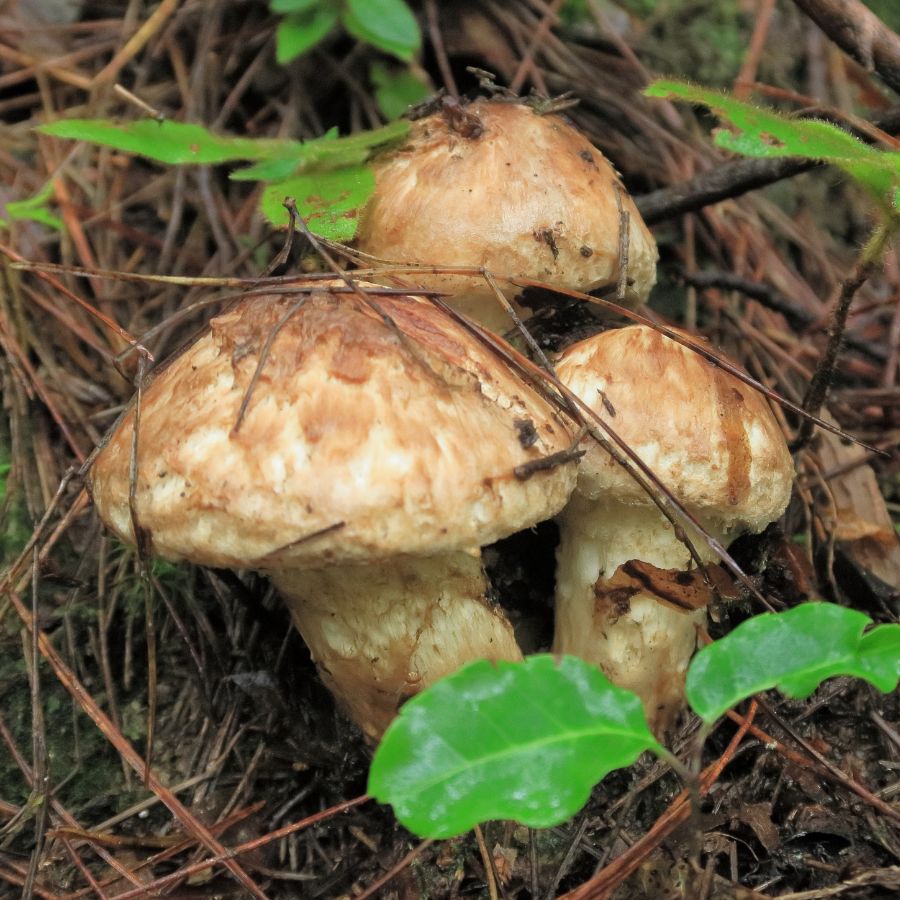
Forageables that are hard to reach or tricky to harvest often end up being more valuable. Some grow in dense forests, need careful digging, or have to be cleaned and prepared before use.
Matsutake mushrooms are a good example, because they grow in specific forest conditions and are hard to spot under layers of leaf litter. Wild ginger and black walnuts, meanwhile, both require extra steps for cleaning and preparation before they can be used or sold.
All of that takes time, effort, and experience. When something takes real work to gather safely, buyers are usually willing to pay more for it.
Foods That Keep Well Are More Valuable to Buyers
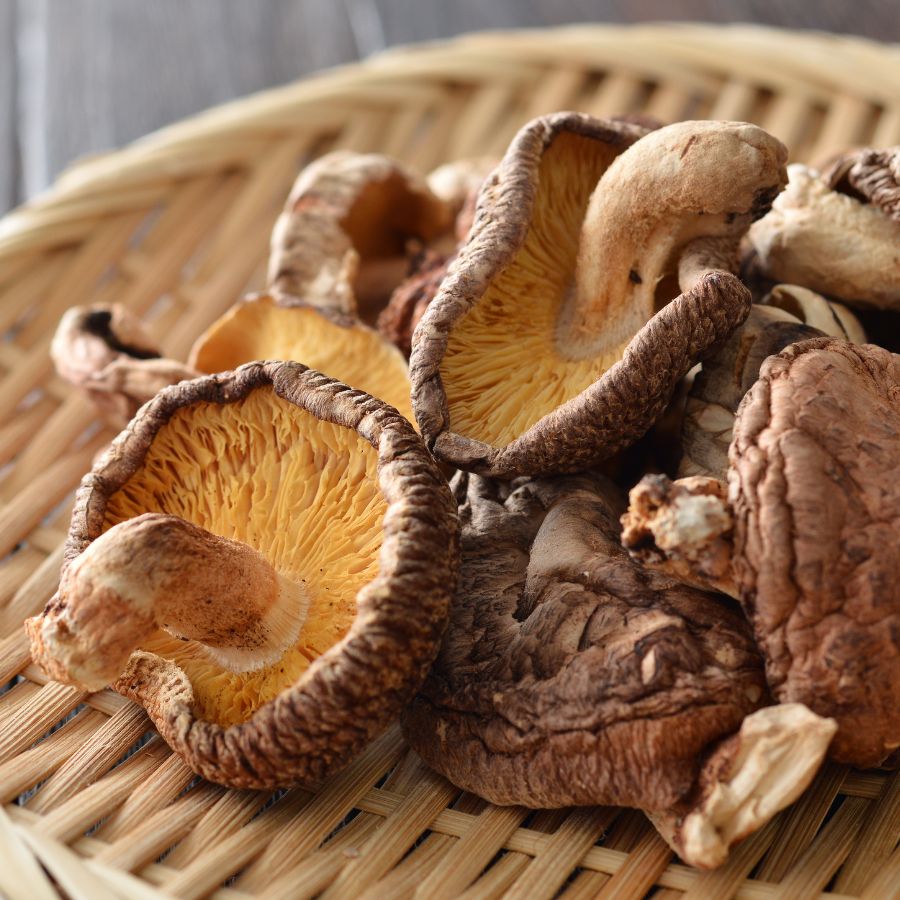
Some forageables, like dried morels or elderberries, can be stored for months without losing their value. These longer-lasting items are easier to sell and often bring in more money over time.
Others, like wild greens or edible flowers, have a short shelf life and need to be used quickly. Many easy-to-identify wild greens and herbs are best when fresh, but can be dried or preserved to extend their usefulness.
A Quick Reminder
Before we get into the specifics about where and how to find these mushrooms, we want to be clear that before ingesting any wild mushroom, it should be identified with 100% certainty as edible by someone qualified and experienced in mushroom identification, such as a professional mycologist or an expert forager. Misidentification of mushrooms can lead to serious illness or death.
All mushrooms have the potential to cause severe adverse reactions in certain individuals, even death. If you are consuming mushrooms, it is crucial to cook them thoroughly and properly and only eat a small portion to test for personal tolerance. Some people may have allergies or sensitivities to specific mushrooms, even if they are considered safe for others.
The information provided in this article is for general informational and educational purposes only. Foraging for wild mushrooms involves inherent risks.
Foraging Mistakes That Cost You Big Bucks
When you’re foraging for high-value plants, mushrooms, or other wild ingredients, every decision matters. Whether you’re selling at a farmers market or stocking your own pantry, simple mistakes can make your harvest less valuable or even completely worthless.
Harvesting at the Wrong Time
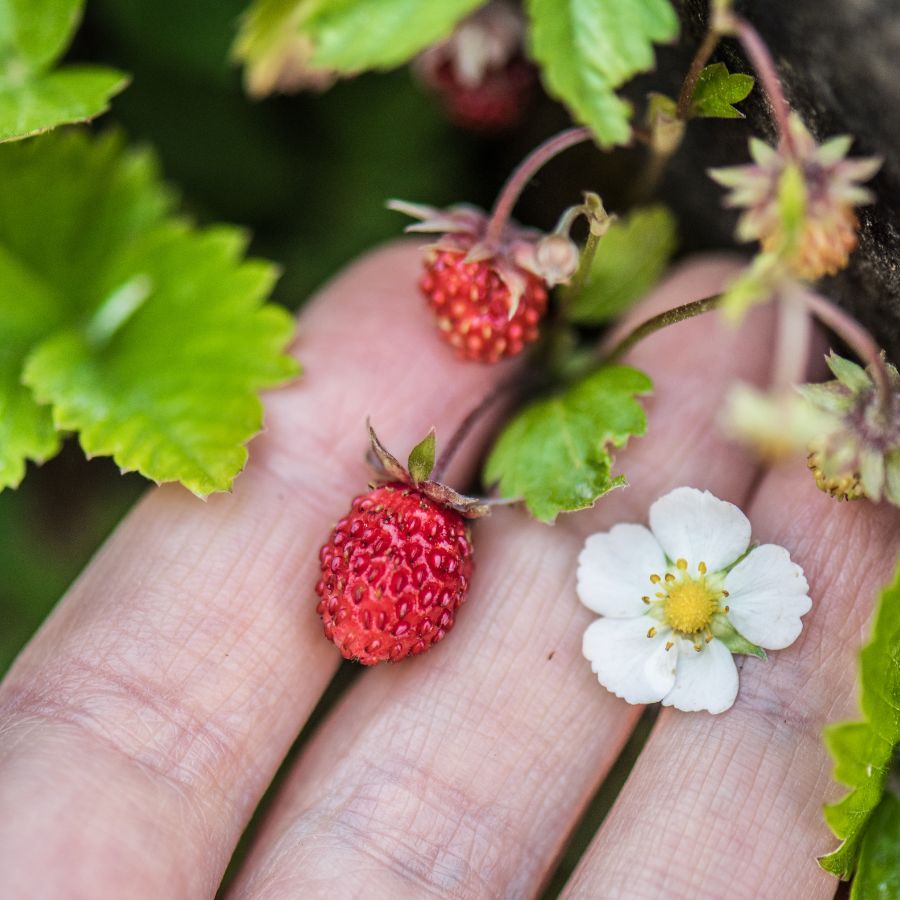
Harvesting at the wrong time can turn a valuable find into something no one wants. Plants and mushrooms have a short window when they’re at their best, and missing it means losing quality.
Morels, for example, shrink and dry out quickly once they mature, which lowers their weight and price. Overripe berries bruise in the basket and spoil fast, making them hard to store or sell.
Improper Handling After Harvest
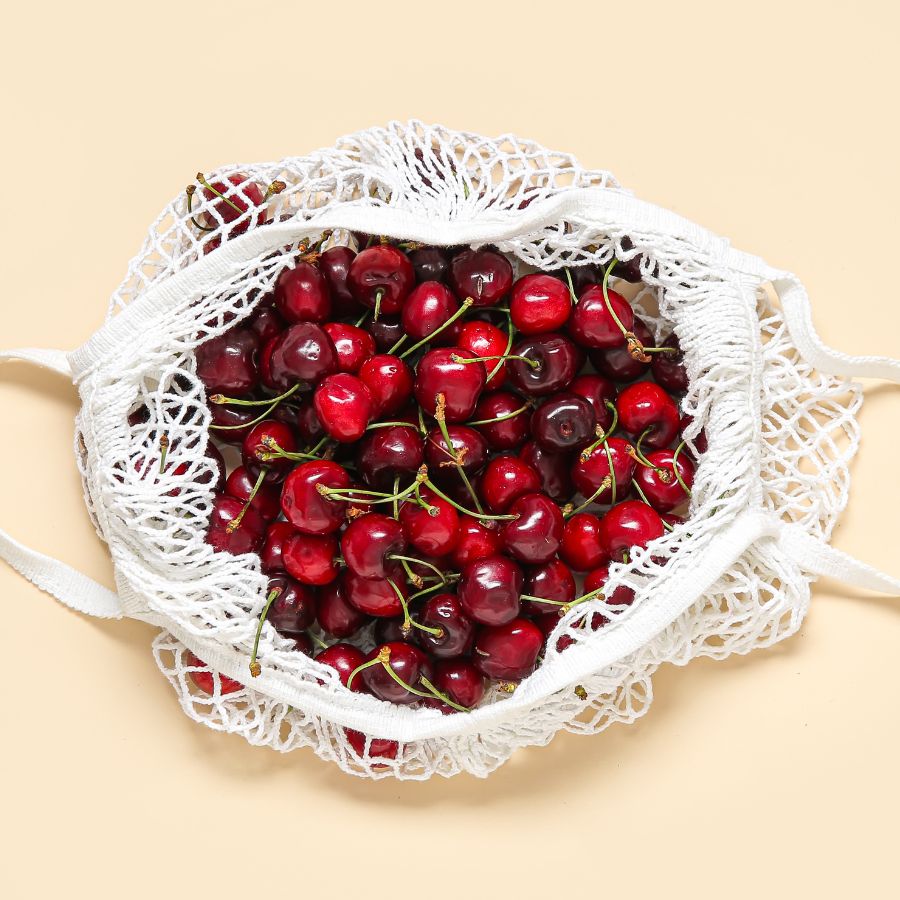
Rough handling can ruin even the most valuable forageables. Crushed mushrooms, wilted greens, and dirty roots lose both their appeal and their price.
Use baskets or mesh bags to keep things from getting smashed and let air circulate. Keeping everything cool and clean helps your harvest stay fresh and look better for longer.
This is especially important for delicate items like wild roots and tubers that need to stay clean and intact.
Skipping Processing Steps
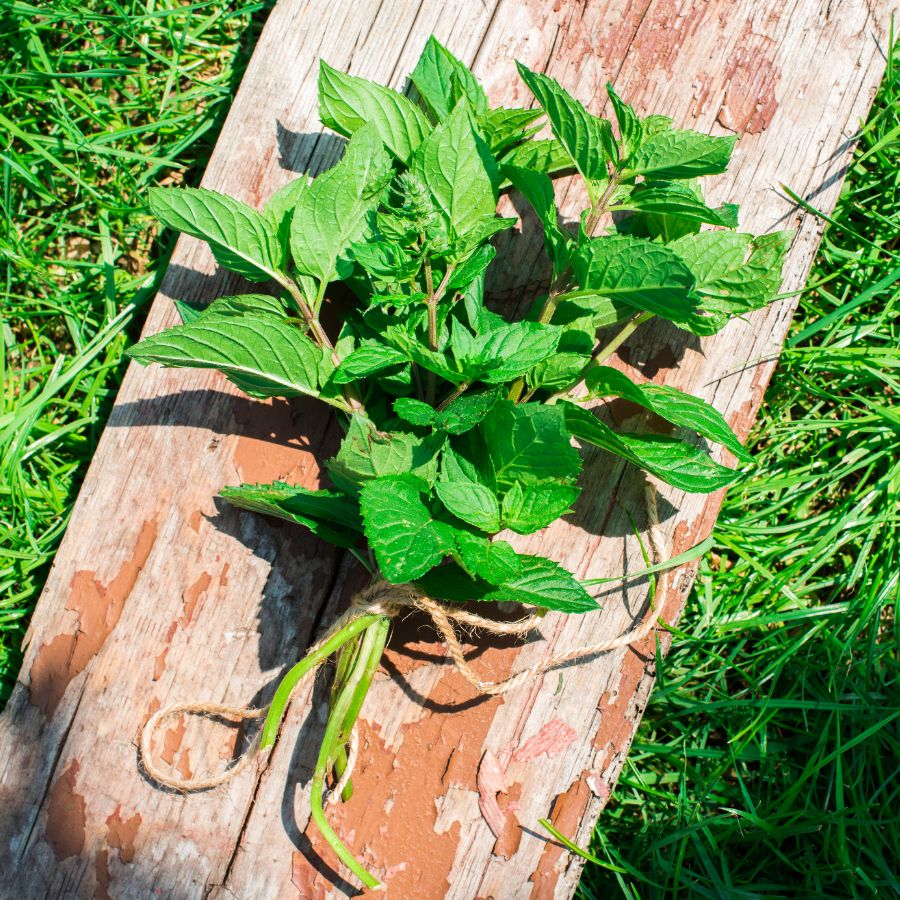
Skipping basic processing steps can cost you money. A raw harvest may look messy, spoil faster, or be harder to use.
For example, chaga is much more valuable when dried and cut properly. Herbs like wild mint or nettle often sell better when bundled neatly or partially dried. If you skip these steps, you may end up with something that looks unappealing or spoils quickly.
Collecting from the Wrong Area
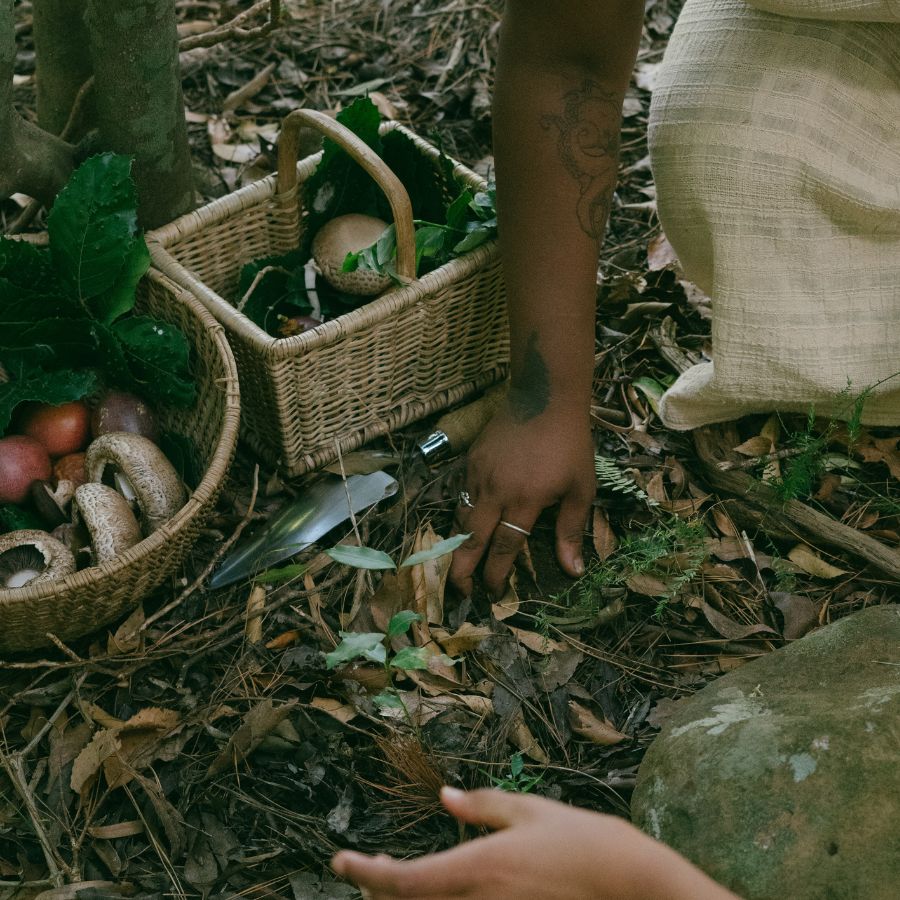
Harvesting in the wrong place can ruin a good find. Plants and mushrooms pulled from roadsides or polluted ground may be unsafe, no matter how fresh they look.
Buyers want to know their food comes from clean, responsible sources. If a spot is known for overharvesting or damage, it can make the whole batch less appealing.
These suburbia foraging tips can help you find overlooked spots that are surprisingly safe and productive.
Not Knowing the Market
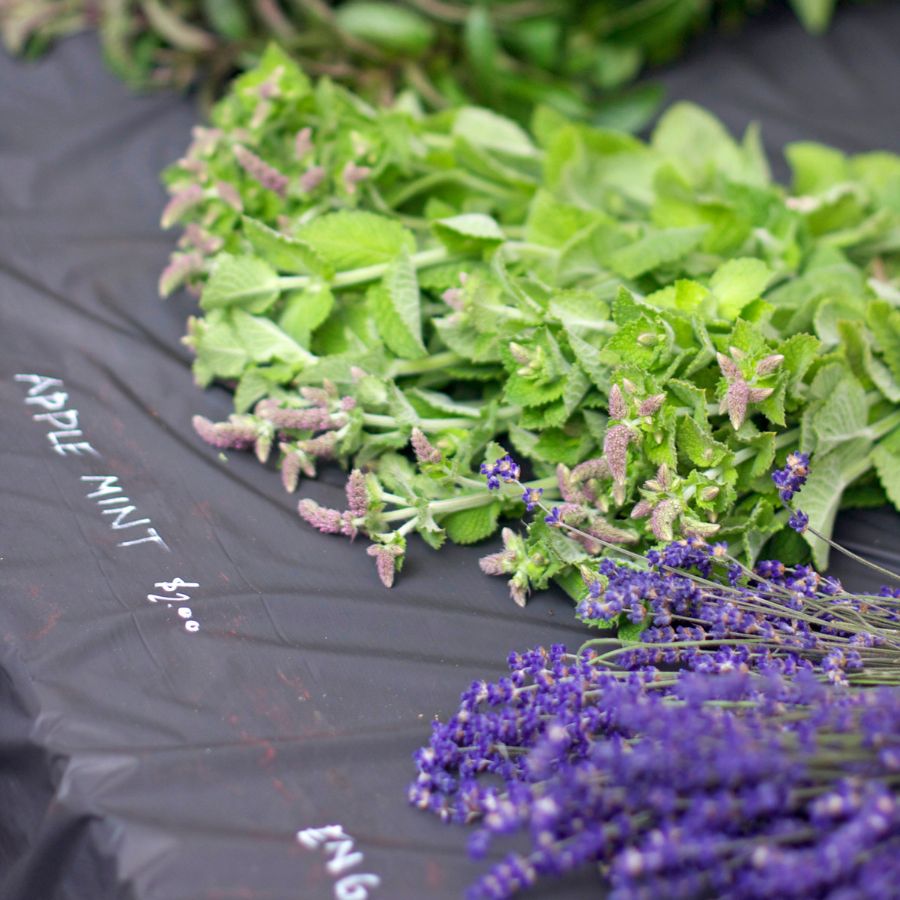
A rare plant isn’t valuable if nobody wants to buy it. If you gather in-demand species like wild ramps or black trumpets, you’re more likely to make a profit. Pay attention to what chefs, herbalists, or vendors are actually looking for.
Foraging with no plan leads to wasted effort and unsold stock. Keeping up with demand helps you bring home a profit instead of a pile of leftovers.
You can also brush up on foraging for survival strategies to identify the most versatile and useful wild foods.
Before you head out
Before embarking on any foraging activities, it is essential to understand and follow local laws and guidelines. Always confirm that you have permission to access any land and obtain permission from landowners if you are foraging on private property. Trespassing or foraging without permission is illegal and disrespectful.
For public lands, familiarize yourself with the foraging regulations, as some areas may restrict or prohibit the collection of mushrooms or other wild foods. These regulations and laws are frequently changing so always verify them before heading out to hunt. What we have listed below may be out of date and inaccurate as a result.
The Most Valuable Forageables in the State
Some of the most sought-after wild plants and fungi here can be surprisingly valuable. Whether you’re foraging for profit or personal use, these are the ones worth paying attention to:
Chanterelle Mushroom (Cantharellus spp.)

Chanterelle mushrooms have a trumpet shape with wavy caps and a golden-yellow to orange color. They smell fruity like apricots and taste a bit peppery when raw and nutty when cooked.
You can tell chanterelles apart from the poisonous jack-o’-lantern mushroom by looking at the underside. Chanterelles have ridges that run down the stem, not true gills. Jack-o’-lanterns grow on wood, while chanterelles grow in soil.
Chanterelles grow in forests near oak, maple, and beech trees. You can eat the whole mushroom, but you might need to cut off the dirty bottom part.
Chefs love chanterelles because they stay firm when cooked. They taste great with eggs, pasta, and meat dishes. They also have lots of vitamin D and antioxidants, which are good for your health.
Maypop (Passiflora incarnata)
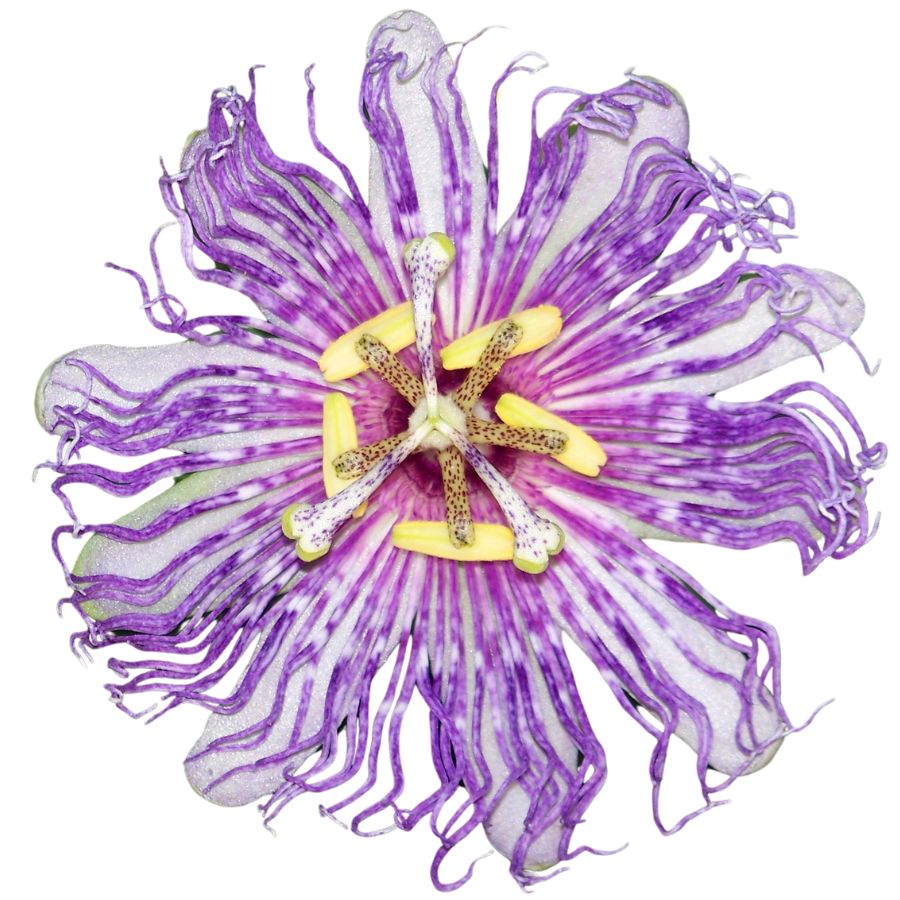
Maypop vines have some of the most unusual flowers in North America, with complex purple and white parts around tall stamens. People named it “maypop” because the hollow fruits make a popping sound when stepped on.
This climbing plant has three-lobed leaves and uses tendrils to climb up supports. The fruits start green and turn yellowish as they ripen, with tasty pulp inside.
The ripe fruit has small seeds surrounded by tangy pulp that tastes like its cousin, the passion fruit. You can also dry the flowers and leaves to make tea that helps you relax.
Many people don’t know this pretty vine makes edible fruit. Though there isn’t much pulp in each fruit, the special flavor makes it worth picking.
Native Americans and early settlers used maypop to calm nerves and help with sleep problems. People who forage like it both for food and medicine.
Black Trumpet Mushroom (Craterellus fallax)
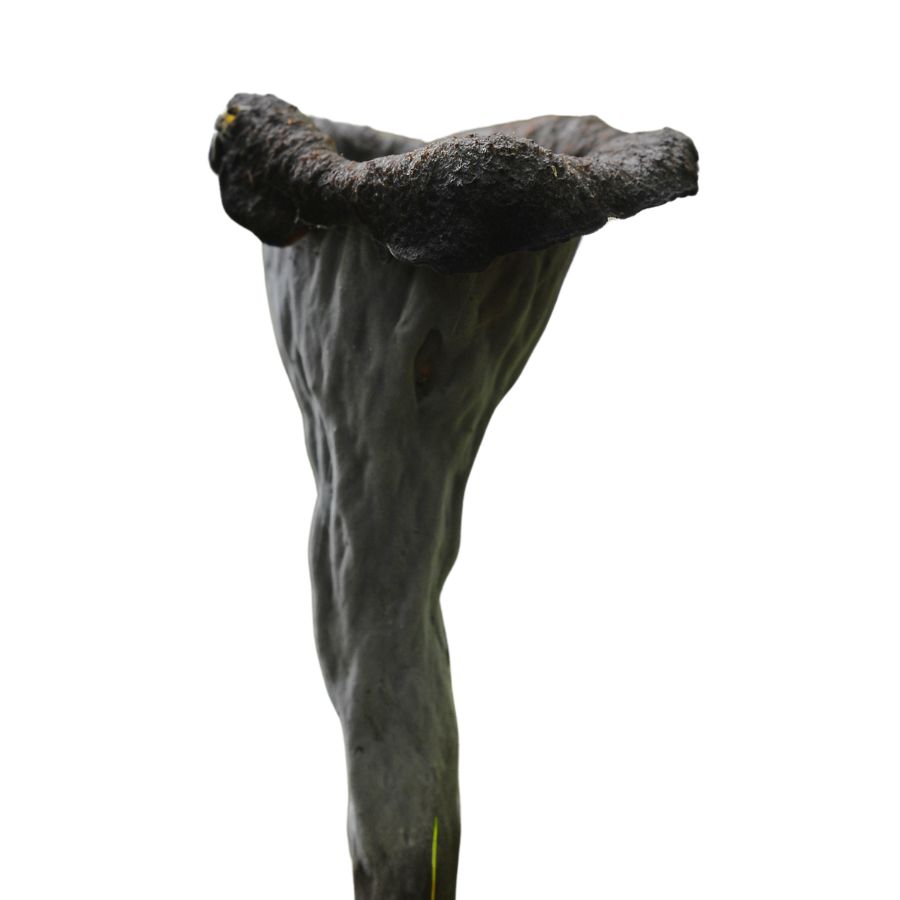
Black trumpet mushrooms are hard to find because their dark, hollow bodies blend in with forest floor debris. Some call them “black chanterelles.” They have a rich, smoky taste with hints of fruit that gets stronger when dried.
These mushrooms don’t have gills. Instead, they have a smooth or slightly wrinkled surface. They often grow in groups in forests with oak and beech trees.
Almost no poisonous mushrooms look like black trumpets, making them pretty safe for beginners. Their dark color can hide dirt, so clean them well before eating.
You can eat the whole mushroom. Just brush off forest debris or rinse quickly if needed.
Cooks value black trumpets for their strong flavor that makes soups, sauces, and egg dishes taste better. They dry very well, which makes their flavor stronger and lets you use them all year.
Wild Blackberry (Rubus spp.)
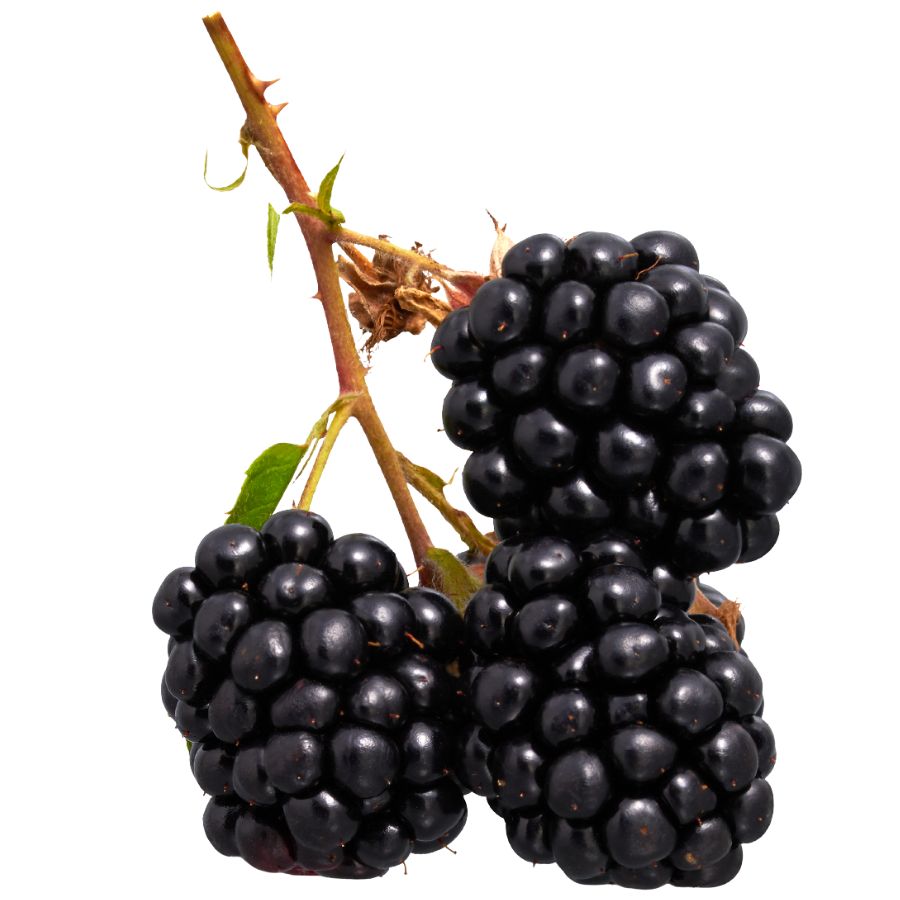
Blackberry, also known as brambleberry or dewberry, grows on thick, thorny canes that can arch and spread across the ground. The leaves are usually serrated, and the fruit ripens from green to red before turning deep purple or black when fully ready to pick.
The berries have a sweet, tangy flavor with a soft, juicy texture that easily bursts in your mouth. You can eat them raw, bake them into pies and cobblers, or preserve them by making jams and jellies.
Only the ripe fruit of the blackberry plant is edible, while the stems and leaves are not usually eaten.
Some plants like black raspberry can look similar, but black raspberries are hollow in the center when picked while blackberries have a solid core. It’s important to avoid confusing blackberries with nightshade berries, which grow on upright plants without thorny vines and can be toxic.
An interesting thing about blackberries is that they are technically not a single berry but a cluster of small drupelets packed together.
Lion’s Mane Mushroom (Hericium erinaceus)
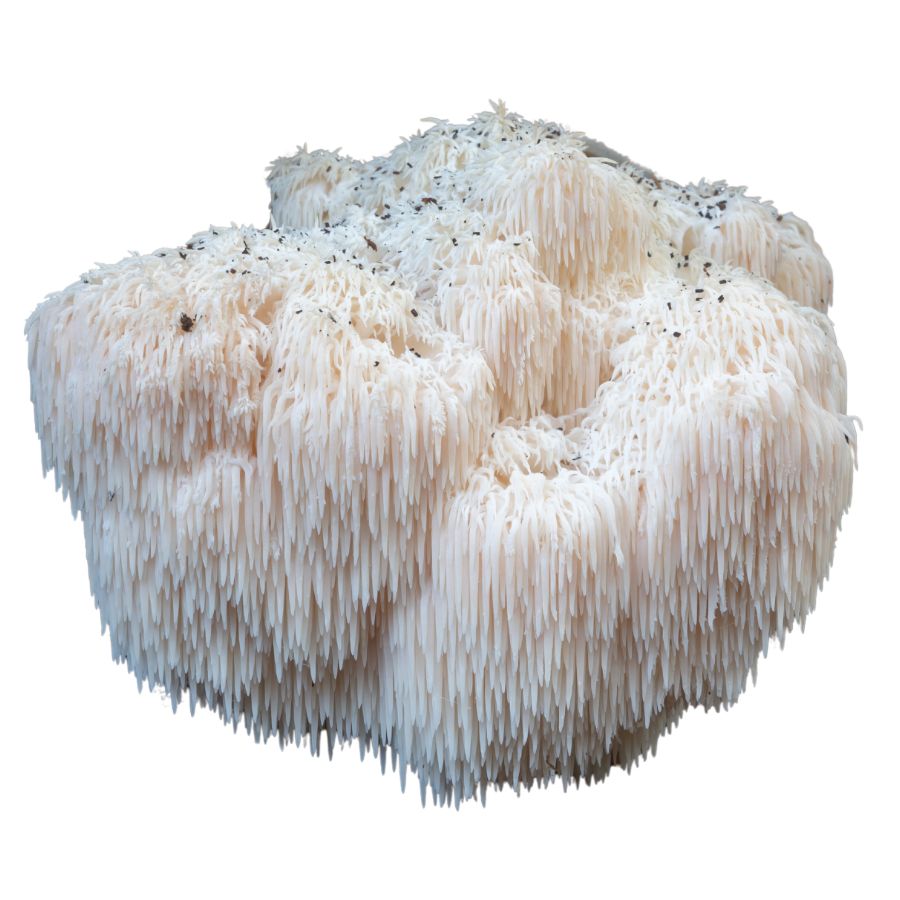
Lion’s mane mushroom looks like a white waterfall or a shaggy lion’s mane. Unlike most mushrooms with caps and stems, this one has tooth-like spines that hang down from where it attaches to trees.
No poisonous mushrooms look like lion’s mane, so it’s great for beginners. It grows on hardwood trees, especially beech and oak, often on damaged parts.
Young lion’s mane tastes like seafood – kind of like crab or lobster. It gets more stringy as it ages but stays tender if cooked right.
Scientists think lion’s mane might be good for your brain by helping nerve cells grow. This has made it popular among people who care about health.
You can eat the whole mushroom. It’s best when white and fresh. Just slice it and cook it in butter until the edges turn brown for a tasty wild treat.
Elderflower (Sambucus canadensis)
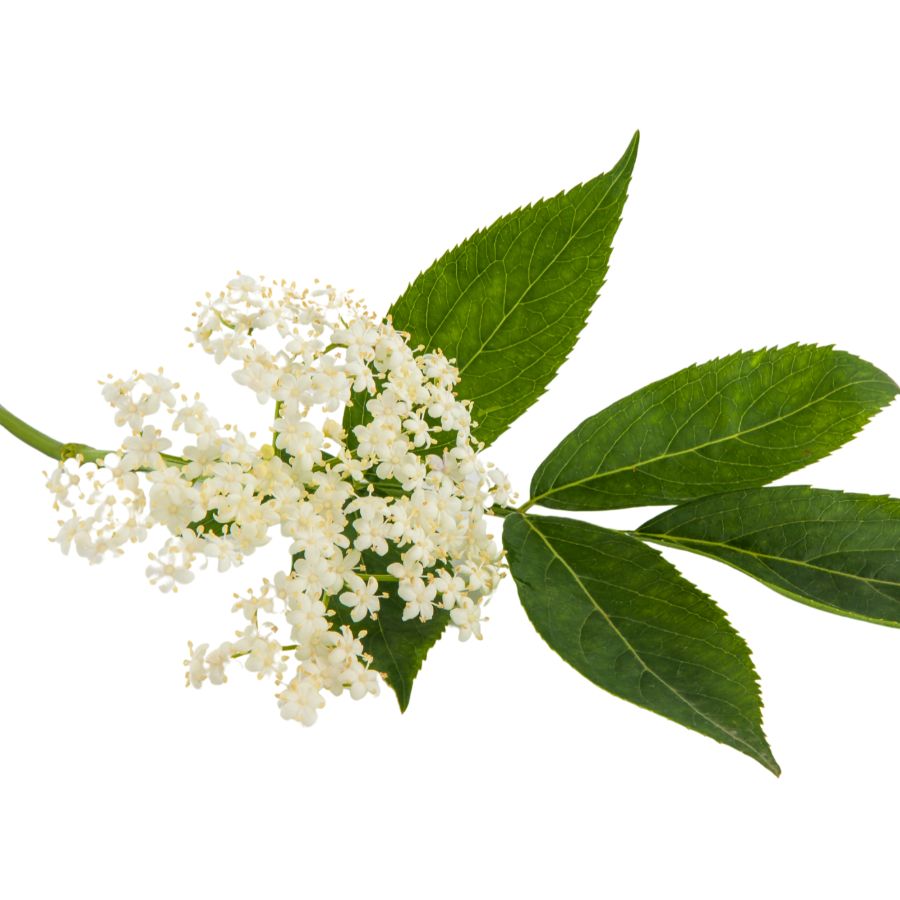
Elderflower grows as large white flower clusters on woody shrubs up to 12 feet tall. The flowers smell sweet and lemony, like honey mixed with summer air.
You can pick these flowers in late spring when they’re fully open but still fresh and white. Avoid any with brown spots or wilting parts.
Only the flowers and fully ripe berries are safe to eat. The stems, leaves, roots, and unripe berries contain harmful substances that can make you sick.
People use elderflowers to make sweet drinks, syrups, and teas. Many value them for their taste and their use in helping with colds and breathing problems. You can also dip the flowers in batter and fry them to make tasty treats.
The flowers are best gathered on warm, dry days when they’re fully open but still fresh looking.
Muscadine Grape (Vitis rotundifolia)
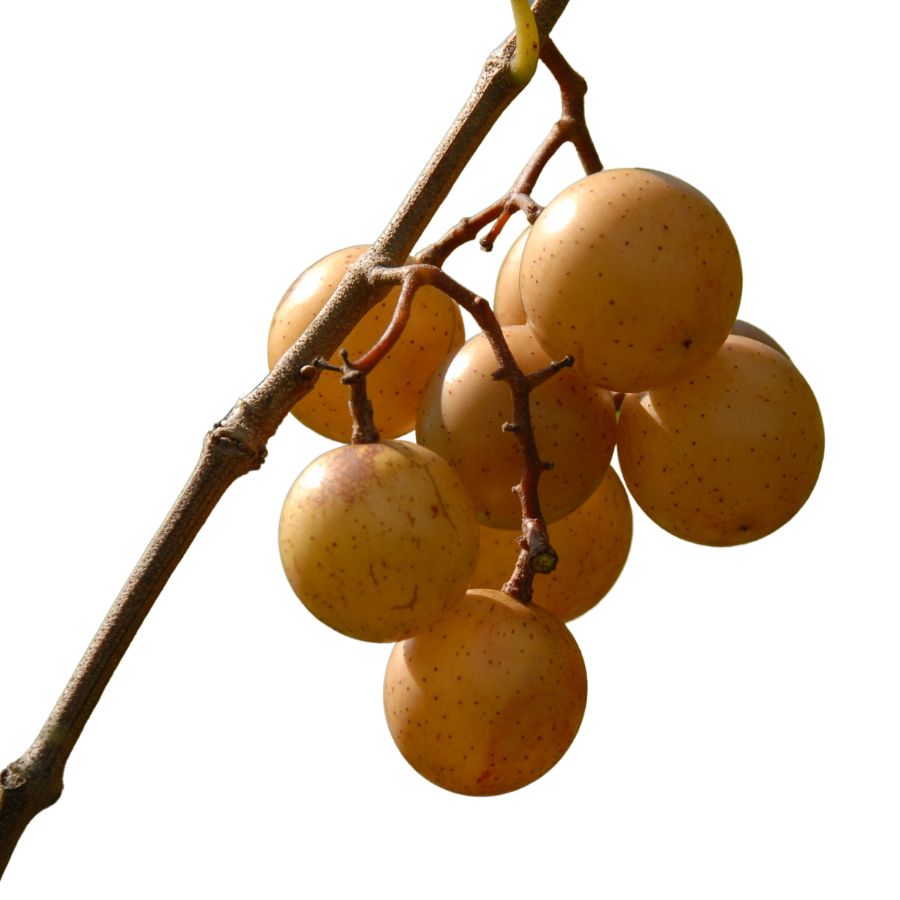
Muscadine grapes grow wild in the southeast United States. They grow as thick woody vines with round fruits that turn bronze to dark purple when ripe. Unlike store-bought grapes, muscadines grow one by one or in small groups of 4-10 berries.
These wild grapes have thick skins with sweet, juicy insides. The skin is edible but can taste bitter. The juice inside is sweet-tart with a unique musky flavor.
When looking for muscadines, search for round fruits about the size of a quarter growing on vines with heart-shaped leaves. They often grow along the edges of forests and in sunny woodland spots.
Muscadines are very healthy, with more good nutrients than most other fruits. You can eat them fresh, make them into jams and wines, or dry them like raisins. The seeds are hard but safe to eat, though many people spit them out.
Wild Garlic (Allium vineale)
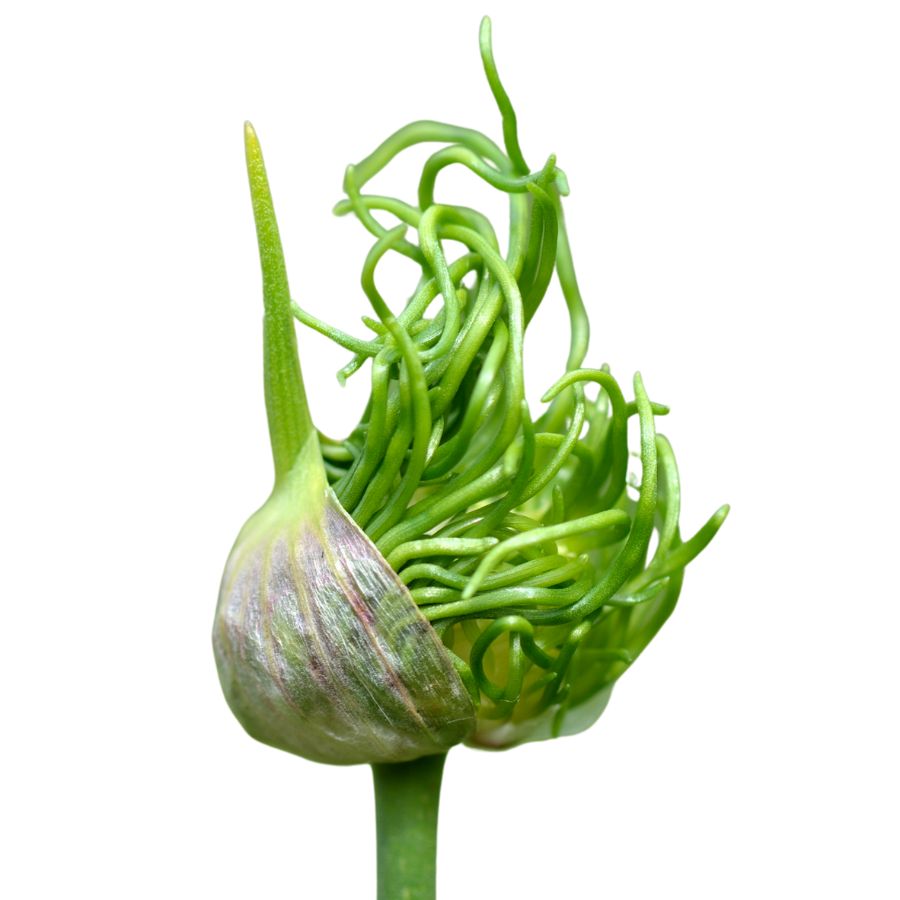
Wild garlic has slender, hollow leaves that look a lot like chives. When you crush the leaves or bulbs between your fingers, they release a strong garlicky smell that makes identification easier.
The are both edible, and You can use the bulbs and leaves raw or cooked in different dishes. Just make sure you are not mistaking it for toxic lookalikes like death camas, which does not smell like garlic at all.
Wild garlic has a sharp, onion-garlic flavor that becomes milder when cooked. You can chop the leaves into salads, stir them into soups, or blend them into sauces like pesto.
One thing to watch for is that the bulbs can sometimes have a tough, fibrous outer layer you will want to peel away before eating. If you want the best flavor, focus on younger, tender leaves rather than older, stringy ones.
Spicebush (Lindera benzoin)
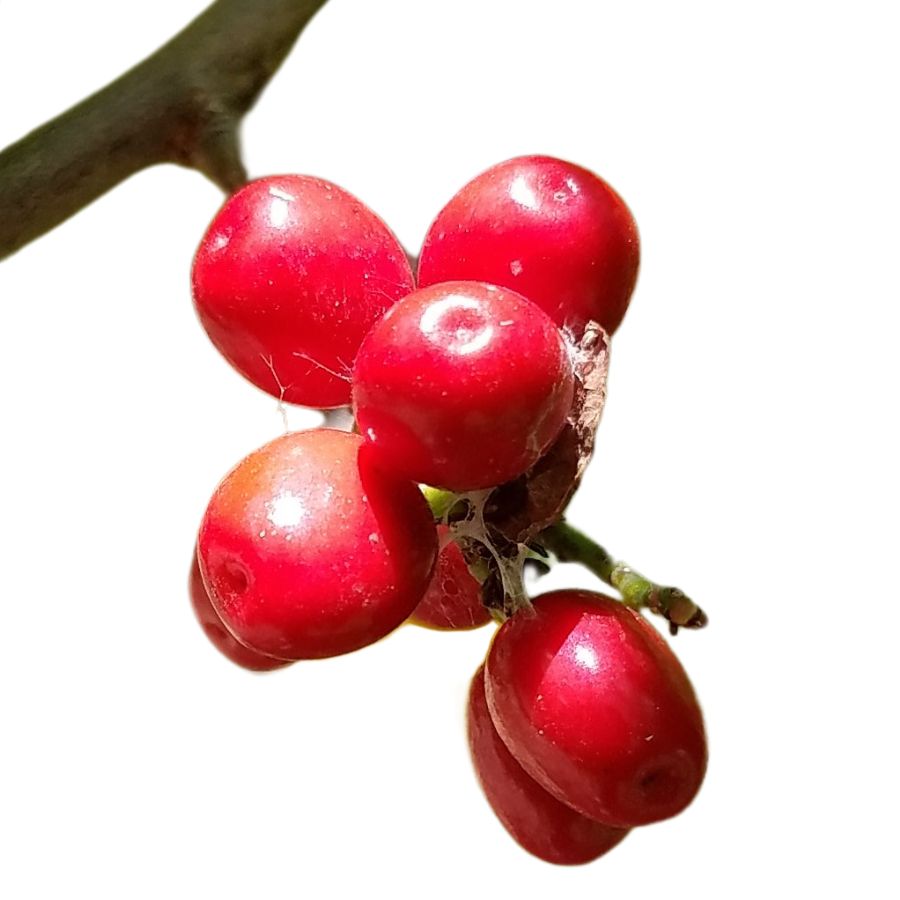
Spicebush has smooth-edged leaves that release a spicy citrus scent when crushed, and it produces clusters of red berries that grow close to the stem. Those berries, along with the young twigs and leaves, are all edible and flavorful.
The berries are especially valued for their warm, peppery kick and are often dried and ground as a seasoning. You can steep the leaves and twigs into tea or simmer them into broths.
Avoid confusing it with lookalikes like Carolina allspice, which has larger, thicker leaves and lacks the same aromatic quality. Its berries also differ in size and internal seed structure.
Spicebush has a long history of use in traditional cooking for its mild numbing effect and warming flavor. Only the berries, leaves, and tender twigs should be consumed—avoid the bark and roots.
Bee Balm (Monarda fistulosa)
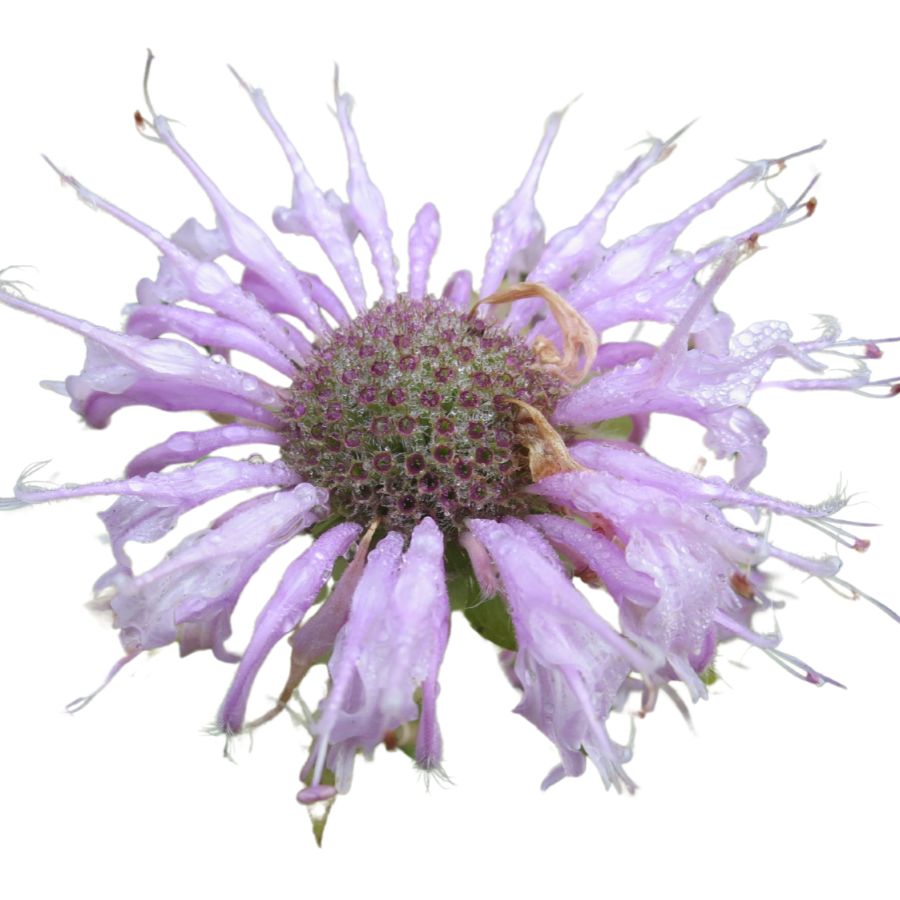
Bee Balm has puffy, round flower heads in light purple or pink colors. Bees, butterflies, and hummingbirds love these flowers. When you rub the leaves, they smell like mint mixed with citrus.
This plant is part of the mint family. You can tell by its square stems and leaves that grow across from each other. You can eat all parts of the plant, but most people use just the leaves and flowers.
To find bee balm, look for square stems, oval leaves with jagged edges, and round flower heads. It has no dangerous look-alikes, so it’s good for beginners.
The leaves make a tasty tea that tastes like mint, oregano, and citrus mixed together. You can add the flowers to salads for color and flavor. People have used bee balm for years to help with colds, stomach troubles, and sore throats.
Wild Mint (Mentha arvensis)

You’re probably familiar with the strong scent of wild mint, which comes from the essential oils concentrated in its leaves. It has square stems, lance-shaped leaves with slightly toothed edges, and pale lilac flower clusters.
The fresh leaves can be eaten raw, cooked into soups, or muddled into drinks for a crisp flavor. Expect a bright, menthol-like kick with a hint of sweetness.
False mint species like purple deadnettle grow in similar spots but lack the menthol smell and have fuzzy leaves. If the plant doesn’t smell like mint, it probably isn’t.
Stick to the leaves and younger stems for eating because the woody stalks aren’t palatable. Wild mint also holds up well when dried and stored for tea or seasoning.
Smooth Sumac (Rhus copallina)
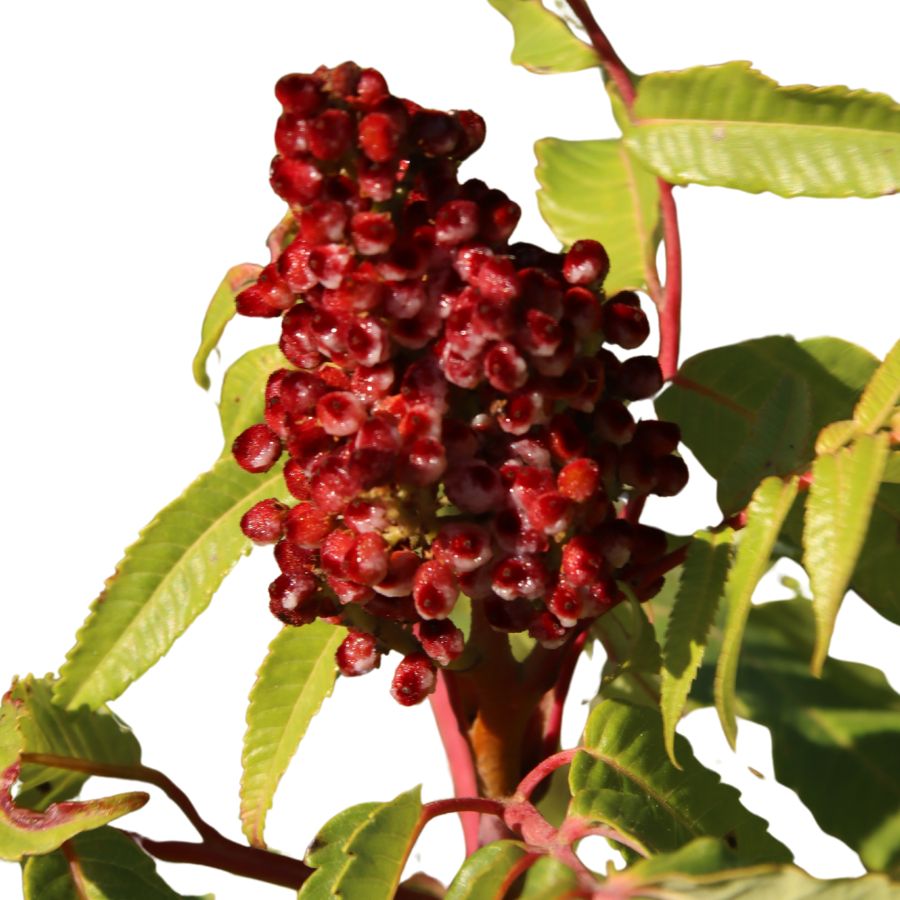
Smooth sumac makes thick clusters of deep red berries that look like small red cones at the ends of branches. These red berry clusters stay on the plant through winter, standing out when snow covers the ground.
The berries taste sour and lemony. People use them to make a drink that tastes like lemonade. Only the red berries are safe to eat. Pick them in late summer or early fall when they’re fully red.
Be careful not to mix up smooth sumac with poison sumac, which has white berries and grows in wet areas. Smooth sumac has red berries and grows in dry, sunny spots.
You can tell it’s smooth sumac if it has compound leaves with a winged stem between leaflets and smooth (not fuzzy) berries. It grows as a bush or small tree up to 15 feet tall.
To use the berries, soak them in cold water for a few hours, strain out the berries, and add sugar to make a drink rich in vitamin C.
Sweet Goldenrod (Solidago odora)
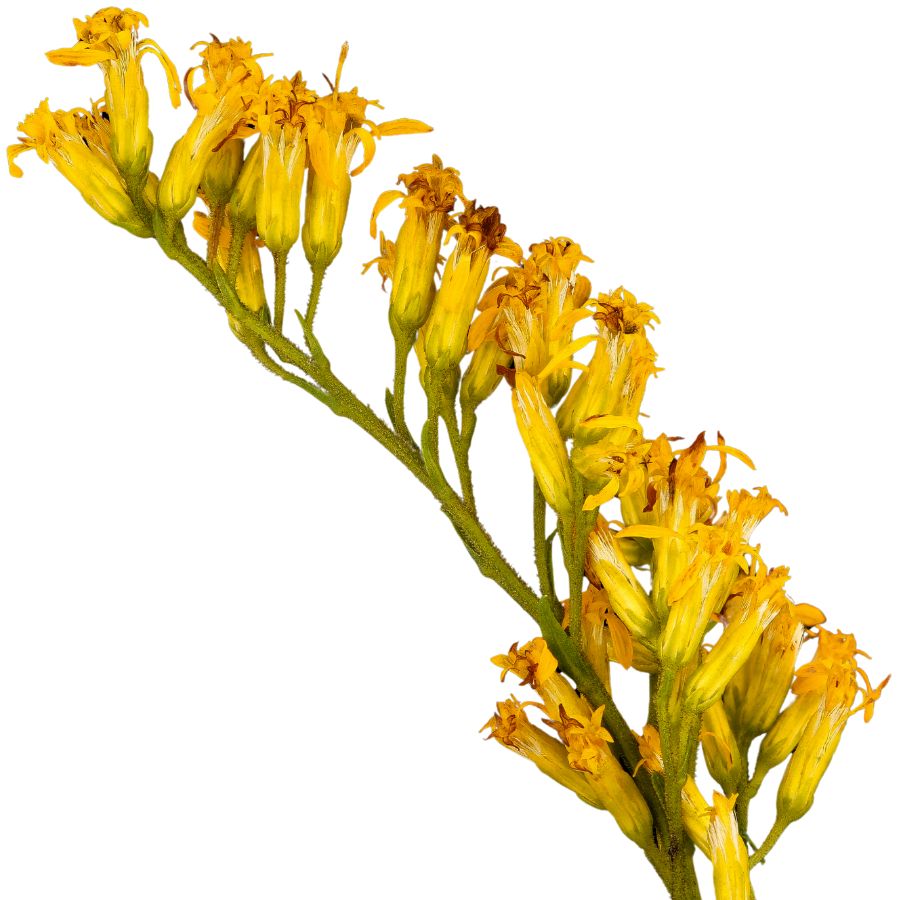
Sweet goldenrod smells like licorice when you crush its leaves. It grows 2-4 feet tall with bright yellow flower spikes that make golden patches in late summer fields and forest edges.
Unlike other goldenrods, sweet goldenrod has smooth-edged leaves that attach right to the stem without stalks. The leaves are narrow and pointed, growing in an alternate pattern up the stem.
Many people think goldenrod causes allergies, but it rarely does. The real cause is usually ragweed, which blooms at the same time but has plain green flowers.
Both the leaves and flowers of sweet goldenrod are good to eat. People have made tea from this plant for hundreds of years. Native Americans and early settlers used it to help with sore throats and stomach problems.
People who forage like sweet goldenrod for its licorice flavor and health benefits. You can add young leaves to salads and dry older leaves to make a nice-smelling tea.
Stinging Nettle (Urtica dioica)
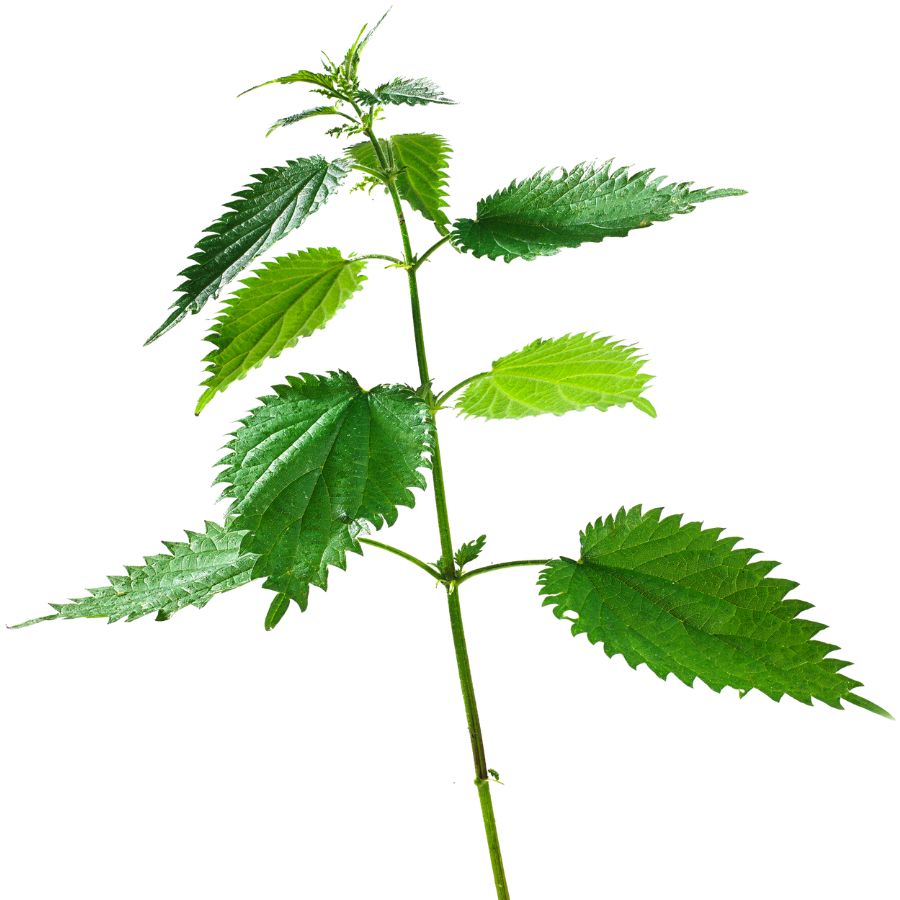
Stinging nettle is also known as burn weed or devil leaf, and it definitely earns those names. The tiny hairs on its leaves and stems can leave a painful, tingling rash if you brush against it raw, so always wear gloves when handling it.
Once it’s cooked or dried, those stingers lose their punch, and the leaves turn mild and slightly earthy in flavor. The texture softens too, making it a solid substitute for spinach in soups, pastas, or even as a simple sauté.
The young leaves and tender tops are what you want to collect. Avoid the tough lower stems and older leaves, which can be gritty or unpleasant to chew.
Some people confuse stinging nettle with purple deadnettle or henbit, but those don’t sting and have more rounded, fuzzy leaves. If the plant doesn’t make your skin react, it’s not stinging nettle.
Sassafras Leaf (Sassafras albidum)
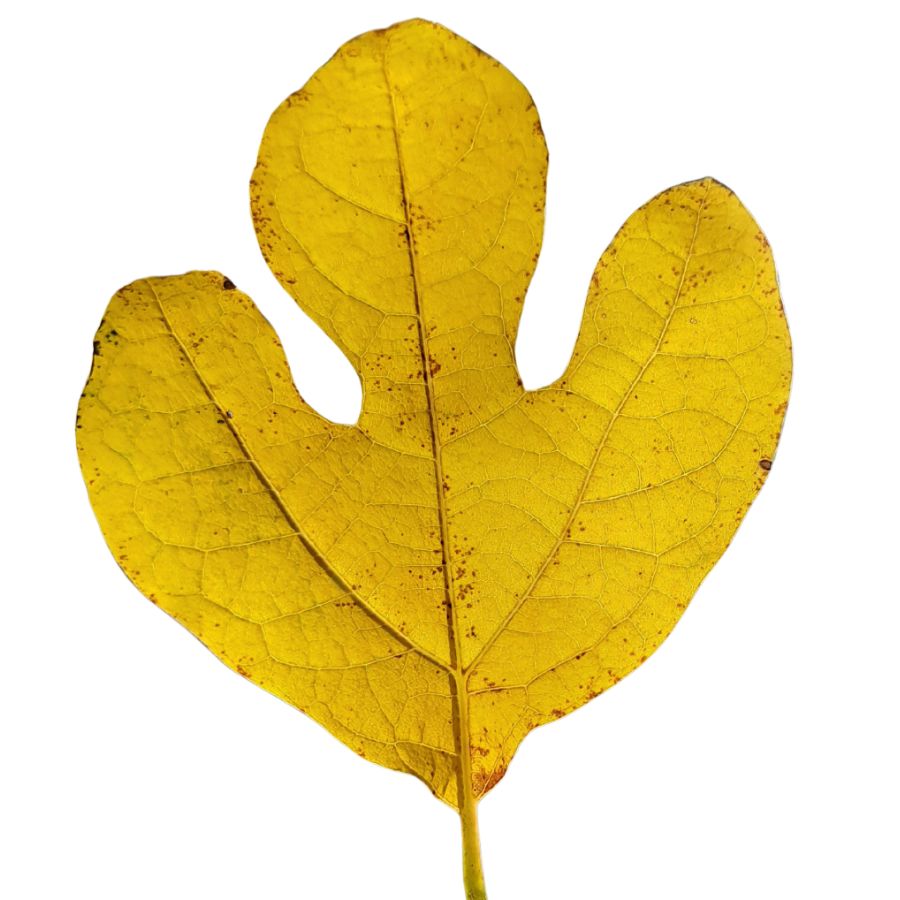
Sassafras leaves are special because they grow in three different shapes on the same tree: some have three lobes, some look like mittens, and others are oval. When you crush the leaves, they smell like root beer. These leaves grow on trees with reddish-brown bark that has deep grooves.
You can dry young sassafras leaves and grind them into filé powder for cooking. This powder helps thicken gumbo, a popular Louisiana soup.
To find sassafras, look for the three leaf shapes and smell for that root beer scent. Young mulberry leaves might look similar, but they don’t have the same smell.
Only use the leaves for cooking. The bark and roots aren’t safe to eat. The best time to pick the leaves is in spring when they’re soft and most flavorful.
Wild Rose Hip (Rosa palustris)
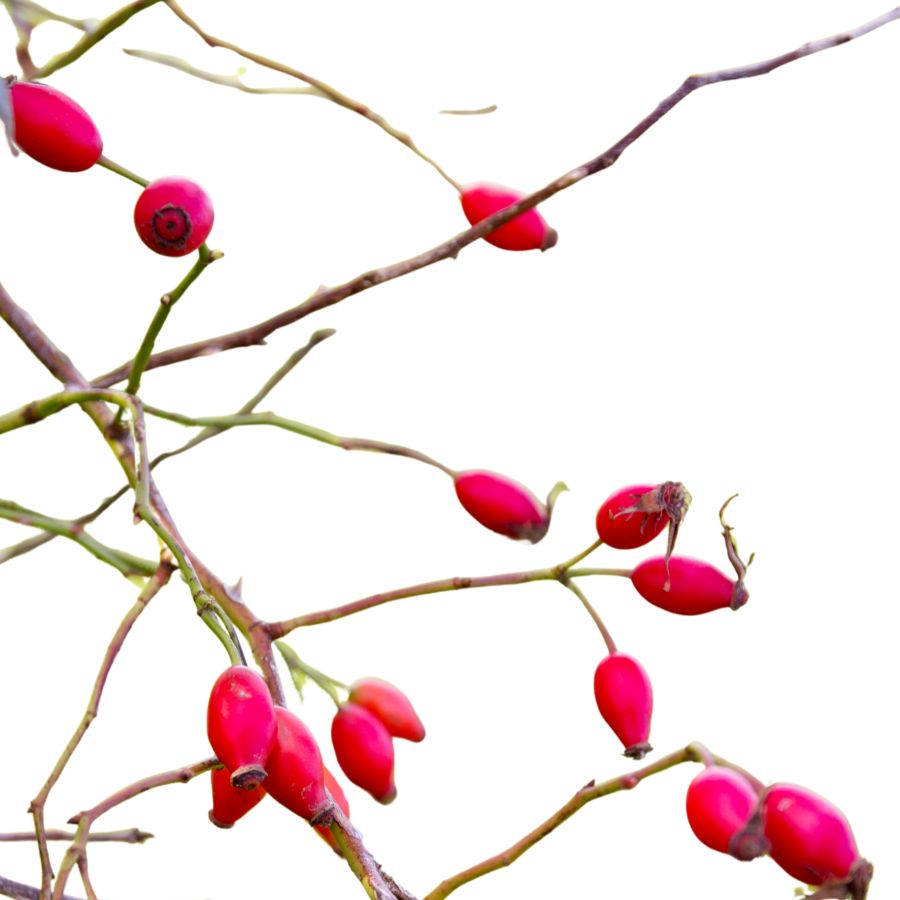
Wild rose hips are the bright red fruits that form after the pink flowers of swamp roses die. They’re about the size of marbles with a taste that’s a mix of apple and cranberry. Each hip has seeds inside surrounded by tiny hairs.
These fruits have lots of vitamin C, much more than oranges. People use rose hips to make jam, tea, and syrup.
You can tell it’s a rose hip by the remains of the flower at its tip. They grow on bushes with thorns and compound leaves.
Pick firm, red hips after the first frost when they taste best. Make sure to remove the seeds and hairs before eating them, as the hairs can make your stomach upset.
Hen of the Woods (Grifola frondosa)
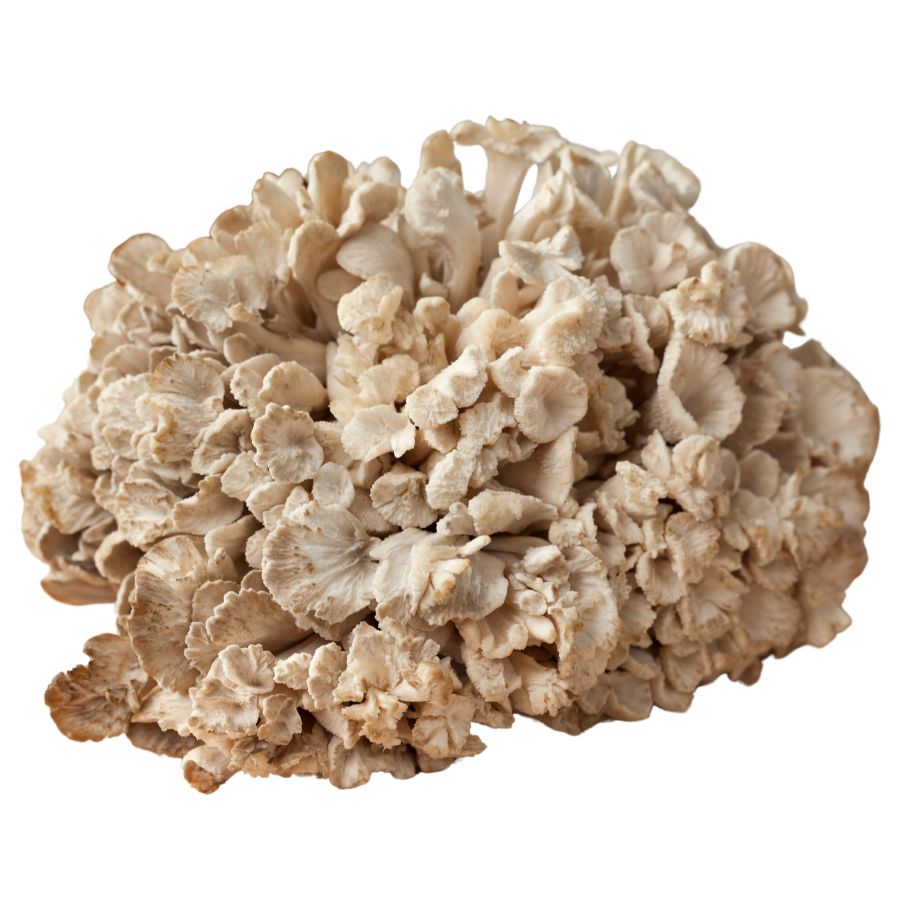
Hen of the Woods is a mushroom that looks like a fluffy chicken with ruffled feathers. It’s brownish-gray and grows in big clumps at the bottom of oak trees. The clumps can be as heavy as a small child! It has a firm texture and tastes earthy when cooked.
This mushroom often comes back in the same spot every fall. When you find a big one, just take part of it so it can keep growing.
Chefs love Hen of the Woods because it has a meaty texture and soaks up flavors well. It’s also good for your immune system.
There aren’t any poisonous mushrooms that look just like it. Before cooking, clean it well because dirt and bugs can hide in its many folds.
Where to Find Valuable Forageables in the State
Some parts of the state are better than others when it comes to finding valuable wild plants and mushrooms. Here are the different places where you’re most likely to have luck:
| Plant | Locations |
|---|---|
| Chanterelle Mushroom (Cantharellus spp.) | – Kisatchie National Forest (Catahoula Ranger District) – Lake Claiborne State Park area – Chicot State Park hardwood trails |
| Maypop (Passiflora incarnata) | – Sam Houston Jones State Park – Tickfaw State Park edge trails – Tensas River near Waterproof |
| Black Trumpet Mushroom (Craterellus fallax) | – Tunica Hills WMA (upland forest) – Lake D’Arbonne area – Indian Creek Recreation Area woodlands |
| Wild Blackberry (Rubus spp.) | – Bogue Chitto State Park – Sabine WMA open fields – Poverty Point Reservoir margins |
| Lion’s Mane Mushroom (Hericium erinaceus) | – North Toledo Bend State Park – Dewey Wills WMA hardwood sections – Lake Fausse Pointe State Park |
| Elderflower (Sambucus canadensis) | – Bayou Segnette State Park – Red River WMA near sloughs – Pearl River WMA |
| Muscadine Grape (Vitis rotundifolia) | – Lake Bistineau State Park – Lake Bruin shoreline – Bayou Cocodrie National Wildlife Refuge border |
| Wild Garlic (Allium vineale) | – Palmetto Island State Park – Vernon WMA near meadows – Big Lake WMA levees |
| Spicebush (Lindera benzoin) | – Sicily Island Hills WMA – Lake Martin swamp edge – Cypremort Point upland woods |
| Bee Balm (Monarda fistulosa) | – Bodcau WMA fields – Grand Bayou Reservoir woodland edge – Indian Bayou area |
| Wild Mint (Mentha arvensis) | – Bayou Teche banks near St. Martinville – Black Bayou Lake edge – Bayou Bartholomew |
| Smooth Sumac (Rhus copallina) | – Jackson-Bienville WMA – Caddo Lake surroundings – Sherburne WMA |
| Sweet Goldenrod (Solidago odora) | – Lake Claiborne roadsides – Lake Chicot levee trails – Vernon Parish pine clearings |
| Stinging Nettle (Urtica dioica) | – Atchafalaya Basin floodplain – Kisatchie Hills Wilderness – Tensas River NWR boundary edges |
| Sassafras Leaf (Sassafras albidum) | – Bayou Macon WMA – Kisatchie Bayou bluff areas – Lake Providence woodlots |
| Wild Rose Hip (Rosa palustris) | – Lacassine refuge perimeter trails – Toledo Bend shoreline – Pearl River bottoms |
| Hen of the Woods (Grifola frondosa) | – Indian Creek hardwood bases – Sabine Parish upland oak groves – Bayou Pierre bottomlands |
When to Forage for Maximum Value
Every valuable wild plant or mushroom has its season. Here’s a look at the best times for harvest:
| Plants | Valuable Parts | Best Harvest Season |
|---|---|---|
| Chanterelle Mushroom (Cantharellus spp.) | Fruiting bodies (mushrooms) | June – September |
| Maypop (Passiflora incarnata) | Ripe fruits, leaves, flowers | Fruits: August – October; Leaves/flowers: June – August |
| Black Trumpet Mushroom (Craterellus fallax) | Fruiting bodies (mushrooms) | July – October |
| Wild Blackberry (Rubus spp.) | Ripe berries | May – July |
| Lion’s Mane Mushroom (Hericium erinaceus) | Fruiting bodies (mushrooms) | September – November |
| Elderflower (Sambucus canadensis) | Flowers, ripe berries | Flowers: May – June; Berries: August – September |
| Muscadine Grape (Vitis rotundifolia) | Ripe grapes | August – October |
| Wild Garlic (Allium vineale) | Bulbs, young shoots | Shoots: February – April; Bulbs: April – June |
| Spicebush (Lindera benzoin) | Berries, young leaves, twigs | Leaves/twigs: April – June; Berries: September – October |
| Bee Balm (Monarda fistulosa) | Leaves, flowers | June – August |
| Wild Mint (Mentha arvensis) | Leaves, tender stems | April – July |
| Smooth Sumac (Rhus copallina) | Berry clusters | August – October |
| Sweet Goldenrod (Solidago odora) | Leaves, flowers | July – September |
| Stinging Nettle (Urtica dioica) | Young leaves, tender tops | February – April |
| Sassafras Leaf (Sassafras albidum) | Young leaves (for filé powder) | April – June |
| Wild Rose Hip (Rosa palustris) | Ripe rose hips (fruits) | October – December |
| Hen of the Woods (Grifola frondosa) | Fruiting bodies (mushrooms) | September – November |
One Final Disclaimer
The information provided in this article is for general informational and educational purposes only. Foraging for wild plants and mushrooms involves inherent risks. Some wild plants and mushrooms are toxic and can be easily mistaken for edible varieties.
Before ingesting anything, it should be identified with 100% certainty as edible by someone qualified and experienced in mushroom and plant identification, such as a professional mycologist or an expert forager. Misidentification can lead to serious illness or death.
All mushrooms and plants have the potential to cause severe adverse reactions in certain individuals, even death. If you are consuming foraged items, it is crucial to cook them thoroughly and properly and only eat a small portion to test for personal tolerance. Some people may have allergies or sensitivities to specific mushrooms and plants, even if they are considered safe for others.
Foraged items should always be fully cooked with proper instructions to ensure they are safe to eat. Many wild mushrooms and plants contain toxins and compounds that can be harmful if ingested.

